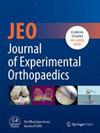Comparable joint awareness and implant survival at midterm follow-up between CR and PS TKA: An anatomic phenotype-based propensity score-matched analysis
Abstract
Purpose
Recent studies highlight the role of joint awareness and the influence of preoperative anatomy on outcomes of cruciate-retaining (CR) versus posterior-stabilized (PS) implants in total knee arthroplasty (TKA). There is currently a lack of studies comparing CR and PS prostheses while adjusting for important anatomical parameters and anatomical phenotypes with large group sizes.
Methods
This retrospective single-centre study analyzed patients who underwent primary TKA with the Triathlon® CR or PS implant system from 2008 to 2014 with a minimum follow-up of 6.5 years. Patients were matched using propensity scores based on demographics (age, gender and body mass index) and preoperative anatomic angle parameters (lateral distal femoral angle [LDFA], medial proximal tibia angle, hip–knee–ankle angle [HKA], arithmetic HKA and joint line obliquity) and Coronal Plane Alignment of the Knee (CPAK) types. Outcome data included patient-reported outcomes (PROMs: Forgotten Joint Score, Oxford Knee Score, Knee Society Score, Western Ontario and McMaster Universities Osteoarthritis Index, visual analogue scale and University of California at Los Angeles), demographic data, post-operative clinical course data. Statistical analysis was conducted using R, with significance set at p < 0.05.
Results
A total of 728 patients (513 CR and 215 PS) were included, leaving 519 patients (346 CR and 173 PS) being analyzed after propensity score matching. Joint awareness and further clinical scores showed no differences between CR and PS implants (p > 0.05). Implant survival at 5 and 10 years was similar for both types (log-rank test: p = 0.164 and p = 0.163), though CR implants had lower survival rates overall. Valgus CPAK types III and VI showed the lowest survival rates, especially for CR implants. Regression analysis revealed younger patient age significantly affected CR implant survival, while increasing valgus LDFA decreased PS implant survival.
Conclusion
No differences were found in the joint awareness of CR and PS prostheses in the medium to long-term follow-up, while controlling for preoperative anatomy. Similarly, there were no significant variations in implant survival. Noticeably higher revision rates in the valgus CPAK phenotypes were found for both systems. A high valgus LDFA angle was identified as a risk factor for revisions in PS systems.
Level of Evidence
Level III.


 求助内容:
求助内容: 应助结果提醒方式:
应助结果提醒方式:


